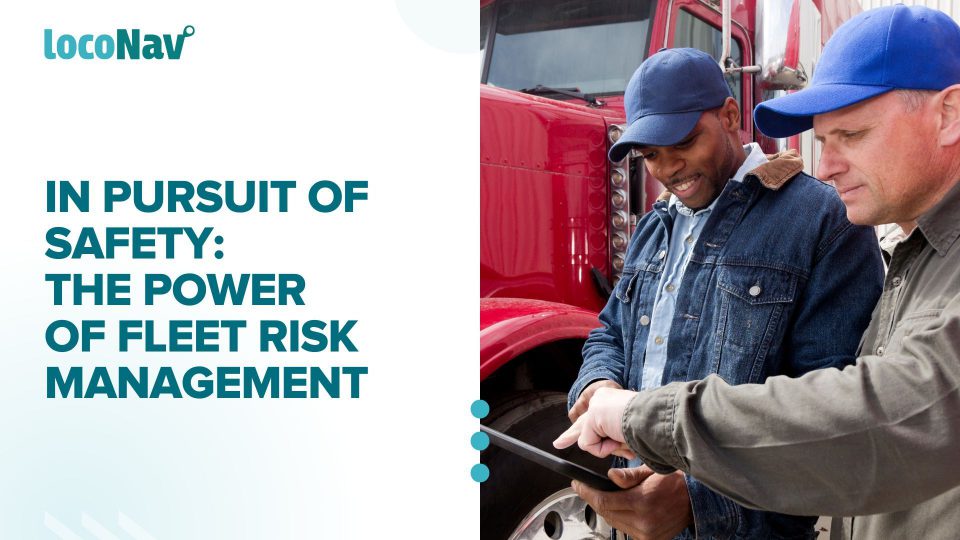

When it comes down to it, running a fleet of vehicles is all about risk management. It is one of the most difficult tasks a fleet manager like you must undertake. Every manager has a plethora of tasks, from keeping drivers on track to maintaining documentation in order.
And the strain in high-stakes trucking might seem insurmountable at times. In addition to purchasing insurance, which protects you against accidents, associated business losses, and medical expenditures, fleet managers can also try their hand at a couple of “hacks” that can make fleet management easier. Just because you have always done things one way does not mean you have to keep going in the same route.
In this blog, we will discuss fleet risk management in detail.
What is Fleet Risk Management? Why Do Fleets Need It?
Fleet risk management is the strategy by which businesses protect the safety and security of their drivers, other fleet staff, and vehicles. It also entails the creation of contingency plans to manage risks when they arise.
Faced with the aforementioned dangers, organisations must find a strategy to minimise, if not eliminate, the damage caused by fleet risks. Fleet risk management is and will be a top responsibility for fleet managers.
This has been propelled by the following:
- The necessity of avoiding costly fines and losses
- Increasing regulatory obligations at all levels of government
- Public knowledge and preference for more secure businesses
6 Point Plan For Fleet Risk Management
Fleet Risk Management recognises that fleets are made up of various vehicles from various sectors. There is no such thing as a one-size-fits-all answer. However, the following six phases are shared by all fleet risk management plans.
Step 1: Maintain Regulatory Compliance
The regulatory labyrinth at the national, state and municipal levels can be a headache. The first stage in fleet risk management is to ensure that your fleet adheres to all requirements. This can be simplified by hiring a dependable fleet manager with decades of experience in fleet management.
Step 2: Coach Your Drivers
Your fleet’s safety and future are at the disposal of your drivers. One of the most successful strategies to have a safer fleet is to train and retrain drivers. Qualified drivers are less likely to cause fatalities or damage to your fleet.
Step 3: Invest in Fleet Management
Incorporating fleet management software into your fleet management strategy will assist you in maintaining safer and more compliant fleets. This software can track the performance of drivers. They can also send out timely reminders about regulatory and maintenance requirements.
Step 4: Consider Telematics
To the delight of fleet managers, the twenty-first century offers infinite technology options. Using Telematics in fleet vehicles can significantly increase driver safety. Dashcams and speed trackers, for example, can be used to alert when a driver demonstrates risky conduct that could endanger lives.
Step 5: Maintain Your Fleet Regularly
To have a reliable fleet, fleet cars must be maintained on a regular basis. All safety initiatives will be futile as long as the fleet vehicles are in poor condition. Proper maintenance, repair, and substitution of broken parts are essential components of safer fleets.
Step 6: Insure All Your Assets
Vehicle, driver, and company-wide insurance is required for fleet safety. If your fleet is unfortunate enough to be involved in an accident, insurance protects your company from any resulting losses. It may also pay for the replacement of your fleet car as well as the driver’s medical bills.
Benefits of Fleet Risk Management
Check out these advantages of investing in a solid fleet risk management plan.
- Employee Security
Fleet risk management guarantees that drivers and other employees of a company are operating in a safe workplace. It also guarantees that those drivers do not endanger their own or others’ lives.
- Compliance with Regulations
A good fleet risk management programme guarantees that a company’s fleet satisfies its compliance standards, avoiding costly fines and legal fights.
- Saves Money
An excellent fleet risk management programme considerably reduces insurance expenses, accident management costs, as well as legal fees and fines.
- Preserves Brand Value
Keeping a fleet’s operations out of the news for endangering lives and ignoring staff safety is a significant commercial gain. It aids in the preservation of a company’s and its brand’s reputations, which is a critical advantage of any fleet risk management programme at the corporate level.
Conclusion
Meeting compliance obligations and regulatory standards can promote vehicle and driver safety by lessening the likelihood of accidents and fines. Maintaining vehicle and driver safety a goal for your company entails thoroughly addressing risk and never underestimating the probability of unforeseeable occurrences.
It is not enough to just ensure that vehicles are mechanically sound and that drivers have appropriate licences. Companies must also aim to foster a safety culture among their staff in order to ensure that compliance policies are understood and followed. With the correct tools, strategies, and practices in place, you may achieve long-term improvement in your risk profile.